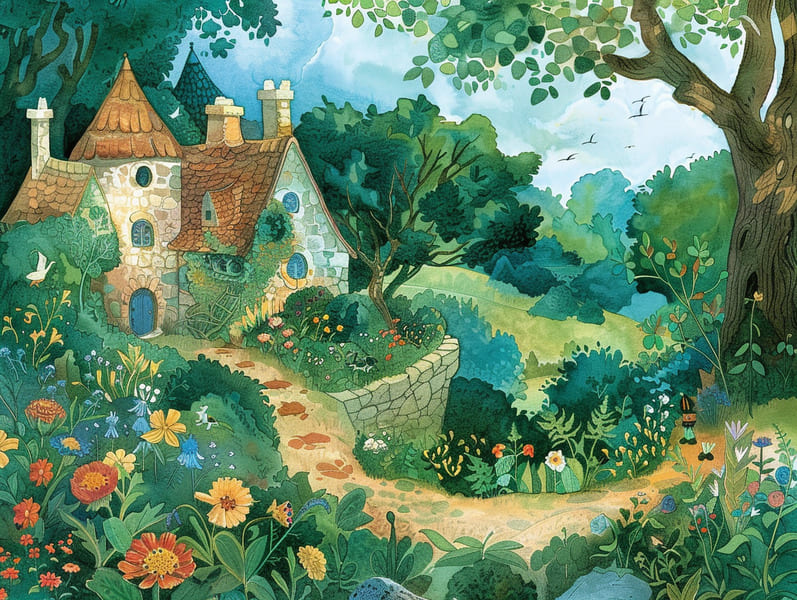Uncovering the Past of Short Fairy Tales with Its Unceasing Elegance.
Uncovering the Past of Short Fairy Tales with Its Unceasing Elegance.
Blog Article

Vintage fairy tales have ancient roots. These tales have been spoken from one generation to the next far before they were ever inscribed. They were born from a variety of societies, including Western traditions. They were initially narrated among adults, often carrying themes and messages relevant to the societal norms and beliefs of the time.
Jacob and Wilhelm Grimm, Jacob and Wilhelm Grimm, were among the first to gather and publish many of these beloved narratives. Their published works, "Grimm's Fairy Stories," included stories like "The True Bride," "Little Brother and Little Sister," and "The True Story of Snow White," which have since become cornerstones in the world of traditional fairy tales. Similarly, Andersen's enchanting narratives, such as "The Story of the Little Mermaid," and "The Story of the Ugly Duckling," have enchanted hearts worldwide, establishing their place in the pantheon of timeless fairy tales.
Though they are old, classic fairy tales remain as meaningful as ever, especially as kids' bedtime tales. These fantastical tales are now available in numerous formats, including vividly illustrated books, fantastical animations, and online storybooks.
Their persistent charm can be credited to several enchanting factors:
Ethical Lessons: Timeless fairy tales often whisper important moral lessons. Stories like "The Story of the Boy Who Cried Wolf" teach the merit of honesty, while "The Story of the Tortoise and the Hare" show the virtues of steadfastness and unpretentiousness. These stories offer the young clear distinctions between correct and incorrect, helping to shape their moral compass in a kind yet impactful way.
Empathy and Understanding: Traditional fairy tales frequently portray individuals facing challenges and problems, urging kids to feel with their struggles and root for their triumphs. For instance, "Beauty and the Beast" conveys the virtue of looking past the exterior to see the true nature of a soul, building awareness and understanding.
Cultural Insights: Many traditional fairy tales are saturated in the cultural contexts from which they were born. Immersing in these stories can provide intriguing perspectives into different backgrounds, advancing a sense of cultural respect and discernment.
Inventiveness and Fantasy: The fantastical elements in classic fairy tales—enchanted objects—kindle children’s dreaming abilities. These stories take readers to magical realms, motivating inventive dreams and a sense of mystery that remains a lifetime.
Ancient fairy tales are not only charming but also illuminating. They serve as entrancing tools in strengthening various mind and heart abilities in children. When old fairy tales are read aloud, they advance verbal skills by presenting new words and intricate sentence structures. This practice also cultivates hearing perception and attentiveness, as young readers stay focused, keen to see what happens next.
Furthermore, analyzing the themes and characters of timeless fairy tales can develop critical thinking and thinking skills. Children are educated to discover patterns, foresee events, and catch on to cause and effect. These contemplations also promote little ones convey their thoughts and feelings, enhancing their emotional intelligence.
In today’s digital era, the accessibility of online fairy tales has made these stories more acquirable than ever. Web-based platforms and apps feature broad selections of timeless fairy tales that can be seen or played anytime, check it out anywhere. Fairy tales narrated are particularly in demand, featuring an interactive way for children to engage with these delightful tales. Sound books and voiced videos take characters and settings to life, often joined by mesmerizing audio effects and musical scores that intensify the storytelling experience.
The unfading fascination of traditional fairy tales lies in their ability to modify to the present while keeping their key morals. Contemporary revisions of these tales often include more inclusive figures and modern settings, making them relevant to today’s audience. However, the main ideas of bravery, goodness, and justness remain unchanged, continuing to move children of all ages.
Timeless fairy tales also offer a sense of ease and knownness. They put forth a well-structured narrative with a straightforward beginning, middle, and end, often closing with the culmination of conflicts and the triumph of good over evil. This constancy can be calming for little ones, allowing a sense of invariability in an fluctuating world.
Timeless fairy tales continue to spellbind and instruct new generations, maintaining their wonder and impact in modern society. As children's bedtime stories, they deliver a perfect blend of wonder and wisdom, nourishing moral values, empathy, and creativity. The abundance of online storybooks and the prevalence of fairy tales recited certify that these old tales remain within reach to new generations.
By safeguarding and circulating these tales, we continue to recognize the rich tapestry of lore and cultural heritage. Whether you are discovering a richly illustrated book, perusing a electronic collection, or listening via an audio story, the attraction of famous fairy tales is always within reach. These tales highlight of the everlasting essence of fairy tales and its ability to unite us across epochs and places.
No matter if you are viewing a vibrantly illustrated book, viewing a electronic library, or playing an voice book, the wonder of Grimm's fairy tales is always within reach.
These fairy tales convey of the immortal essence of stories and its ability to join us across time and space, making a tie that fascinates and enlightens alike.